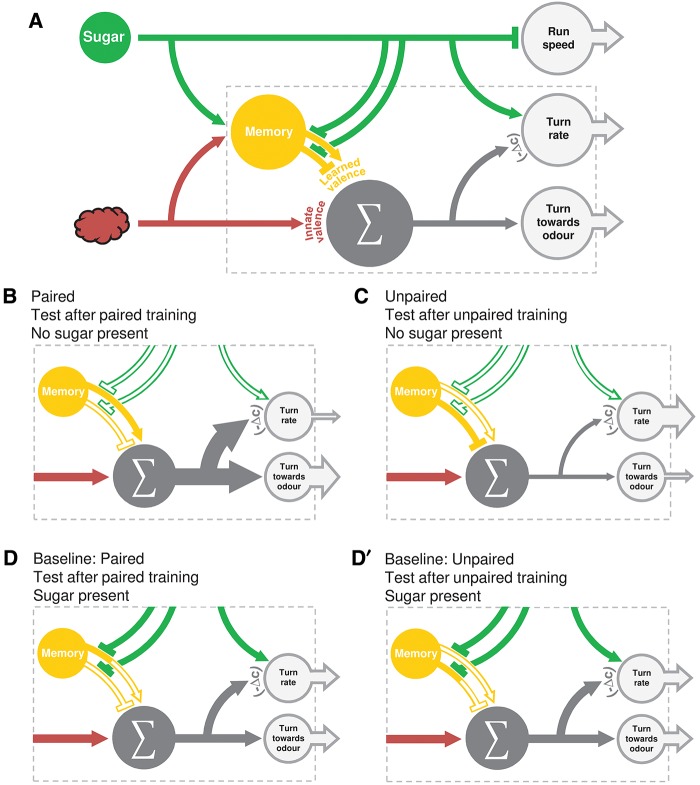Figure 6.
Working hypothesis. Working hypothesis of how sugar, odor and odor–sugar memory modulate chemotaxis. (A) An overview, (B–D) illustrates the plausible outcome of different training procedures. (A) Sugar reduces run speed and increases turn rate. Odor signals are processed toward the motor system via two routes. First, most odors elicit a response with a positive valence in experimentally naïve larvae (valence understood throughout as level of attractiveness). Second, during associative training a memory is formed. This memory is of positive valence after paired odor–sugar training, and of negative valence after unpaired presentations of odor and sugar. At the moment of testing, learned and innate valences are summed, and the resulting signal modulates turn rate and turning direction. We propose that a multiplication rule involving the negative change in odor concentration, that is −(▵c), ensures that a net positive valence reduces turn rate when approaching the odor source, and increases turn rate when moving away from it. Notably, signaling of learned but not of innate valence can be blocked by the presence of sugar in the test situation. (B) After paired training, a positive learned valence is added to the innate valence of the odor. The summed valence leads to an increase in the proportion of turns toward the odor compared with baseline (D). Furthermore, when the larva is approaching the odor source (▵c is positive), turn rate decreases. (C) After unpaired training, negative learned valence is added to innate valence. If the innate valence remains larger than the negative learned valence, the combined outcome still modulates turn rate and turning direction positively, even though the degree of attraction is reduced compared with paired training (B). If the level of innate valence were lower than in the present experimental condition (and thus positive innate valence would be smaller than negative learned valence), we would expect the sum of innate and learned valence to be negative after unpaired training. This would lead to aversion to the odor. (D,D′) When tested in the presence of sugar, signaling of learned valence is blocked. Thus, only innate valence determines chemotaxis and therefore larval behavior is the same after paired and unpaired training. In addition, the presence of sugar increases the overall turn rates in both these groups.

